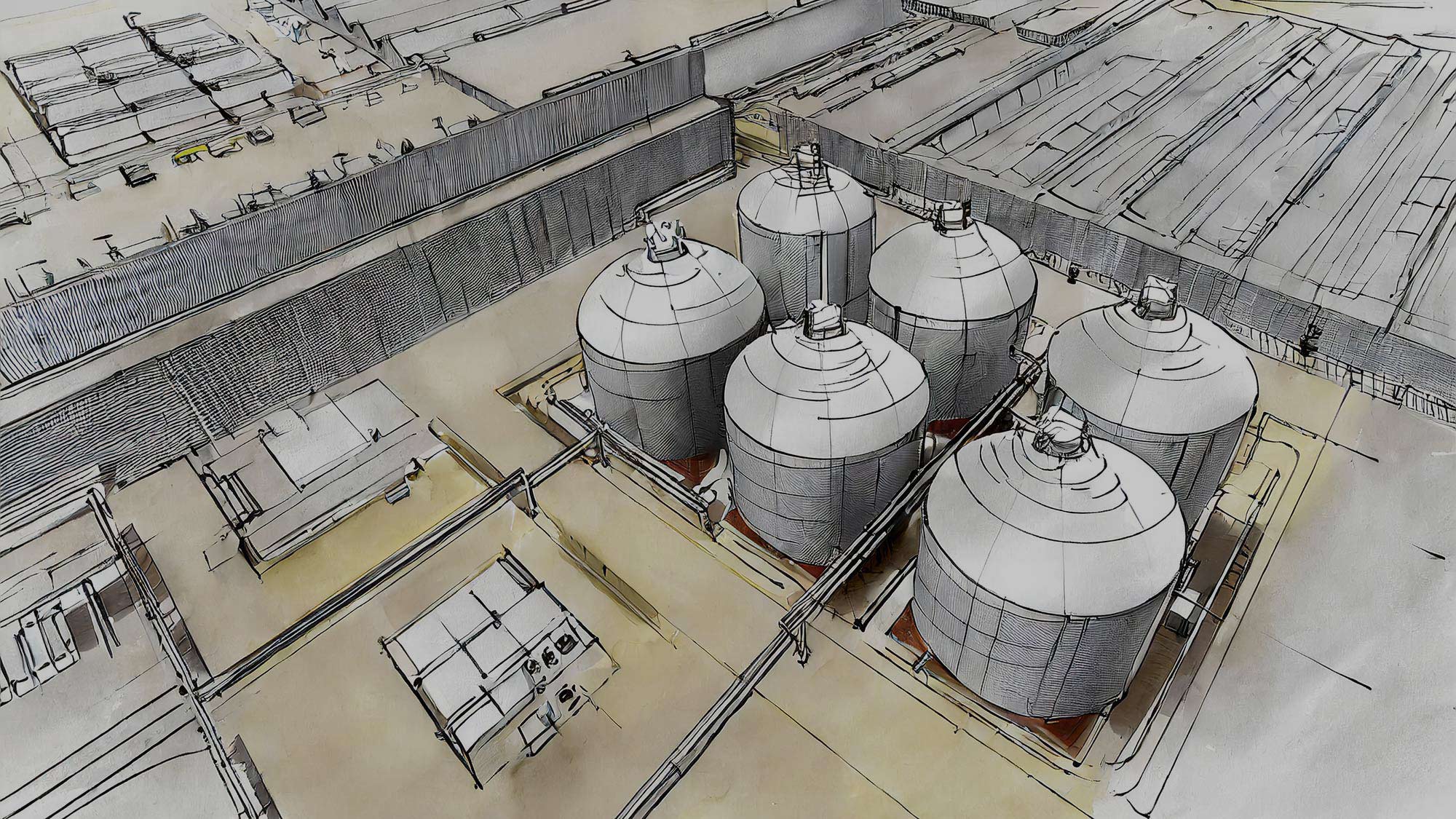With data centres consuming an increasing share of the world’s energy, their plans for net zero need to consider greener forms of back-up power generation. Low-carbon hydrogen as an energy storage medium could be the answer.
When we’re surfing the net or posting on social media, we rarely consider what it’s costing in energy terms. But the data centres that process our online activity are voracious consumers of electricity. Therefore, as they grow in number and capacity, their consumption is only likely to grow.
For the most part, data centre operators are committed to decarbonisation and a pathway towards net zero. Most data centres already rely on renewable electricity for their primary power supply through the use of Power Purchase Agreements. But the standard solution for power generation during their maintenance periods (and extremely rare power outages) is not so low carbon. When they need to switch off the mains, data centres power up their suite of on-site diesel generators.
In a future aimed at achieving net-zero emissions, the gradual elimination of diesel and other hydrocarbons becomes imperative. Consequently, data centres must seek a sustainable backup solution - one that eradicates emissions not only during routine annual maintenance and testing but also in the less probable event of a power system failure. Our examination of the main alternatives confirms the potential for hydrogen to play a part in a low-carbon future for data centres – specifically, low-carbon hydrogen for energy storage.
The hydrogen promise
Hydrogen burns with no carbon emissions. It is already being adopted as a fuel in industrial production, and new technologies for the low-carbon hydrogen production and power generation are under development. Hydrogen is a solution for the medium-term future. It’s adoption today by data centres would present challenges: many would require several tube trailers of hydrogen a day to keep them running in the event of a grid outage. Storage of hydrogen on-site in the form of compressed gas would demand a large spatial footprint; its storage as a liquid would demand significant additional energy.
But the viability of hydrogen will increase greatly in the coming years, as transportation and storage technologies are further developed and adopted. As countries develop their hydrogen strategies, we’re likely to see it becoming cheaper to implement at scale, reducing the capital expenditure required for data centres to make the switch.
Short-term alternatives
In the shorter term, we are seeing some data centres move to biofuel alternatives to diesel to drive their on-site turbines, principally hydrotreated vegetable oil (HVO). HVO has a similar chemical composition to diesel and demands little or no adaptation of equipment. It has the capacity for storage and utilisation for a period of up to ten years, requiring less demanding onsite maintenance when contrasted with diesel, which necessitates polishing systems to maintain stored fuel for a similar duration. Additionally, it has the potential to reduce emissions by as much as 90%. The main drawback against its use is that the preferred source for HVO production is palm oil, a known contributor to poor land and forest management, and some countries and manufacturers have now pledged to ban palm oil from their products.
Other alternatives to diesel exist, such as compressed air energy storage (CAES), flywheel energy storage (FES), and battery energy storage systems. Each of these options presents challenges and opportunities for data centres. Committing to a palm oil-free HVO offers operators the chance to instantly reduce their emissions with minimal extra investment needed in equipment. But it is no long-term solution – rather, a stop-gap while the hydrogen-as-fuel industry continues its rapid development.
Implementing hydrogen
So, how exactly would hydrogen-based power generation work? We foresee a model in which hydrogen is used as an energy storage medium. While hydrogen could power industrial process and commercial vehicles, large energy-users such as data centres will draw on stored hydrogen to fuel electricity generation.
This would need data centre operators to invest in power generation equipment that could run on the new fuel. Currently, the industry supply chain is in the process of deploying hydrogen turbines that can effectively utilise 100% hydrogen, at scales that could be suitable for resilient data centre standby configurations. Anticipated developments include the introduction of higher-capacity turbines over the next decade. Additionally, exploring alternatives, such as incorporating hydrogen derivatives like ammonia in combustion turbines or choosing fuel cell electricity production over combustion, could reveal potential avenues for widespread data centre deployment.
A potential model may see data centres produce their own hydrogen, too, taking excess renewable generated electricity to produce low-carbon hydrogen via a small-scale, on-site electrolyser. This would then be stored in a facility owned by the data centre operator and drawn on to generate power when required. Any excess hydrogen could potentially be exported to market and provide a source of revenue.
The hub model
Data centre operators that choose to buy in hydrogen rather than produce it would face new considerations in site selection. Today, site selection is driven by the availability of fibre connections and electrical supply. In the future, data centres that have hydrogen delivered by pipeline could locate close to production facilities, or low carbon ‘hydrogen hubs’, to reduce transportation costs.
These hubs, which would use excess energy to produce low-carbon hydrogen, will in turn be sited close to renewable energy generation. Until hydrogen is delivered through mains pipelines, we could see the decarbonising data centre sector migrate away from its traditional industrial park settings to neighbour solar and wind farms.
In the UK, demand from the decarbonising data centre industry for hydrogen hubs could be decisive in years to come in tipping the balance towards making them viable enough for major investment, and spearheading the hydrogen revolution as part of the wider net-zero energy ecosystem. A switch to hydrogen by data centres might do more than help decarbonise the sector; it could be instrumental in a much wider adoption of this low-carbon fuel.
Article based on contributions from Thomas Shaw with support from Andrew Clough, Simon Todd, and Mike Copson.
 ;
;




